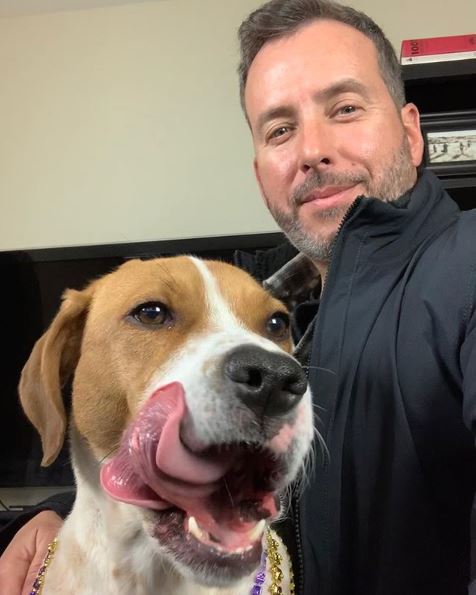
"I am Elmer J. Fudd, millionaire. I own a mansion and a yacht." That is an example of a personal branding statement. It’s concise, to the point, and pulls no punches. It sells the fact that you are in the presence of a successful and powerful person, sort of. But you’ll need more than that for a good first impression.
It’s easy to forget that Personal branding is about more than your online persona. Occasionally we must creep from our lair to venture out into the real world in the name of business and networking. For those times when you have to endure a face to face encounter, here are some keys to making a strong first impression in the physical realm:
body language – establish your space, don’t slouch, make eye contact;
conversation skills – focus on the person you are speaking with, not yourself;
your voice – avoid speaking in a monotone, too quietly, or too quickly,
elevator pitch – aka your personal branding statement.
These excerpts from How to Make a Powerful First Impression, an article on Entrepreneur.com by Robert Jones, offer some great insight:
"Lillian Bjorseth, a communications consultant and author of Breakthrough Networking, says people decide many things about you within 10 seconds of seeing you–usually before you even open your mouth. That’s why entrepreneurs should always be conscious of their aura, she says.
Body Language
"The aura is the area around you that you create by what you wear, how you act, how you look," she says. "It all goes together to make one impression. You could wear a very expensive suit, but if you stand slumped over with your head down, you won’t give a confident aura."Though every person’s aura is complex and unique, Bjorseth says entrepreneurs can focus on a few simple, non-verbal priorities to appear confident and in control. First, don’t slip into a room "all smiles." Instead, "claim your space" in the room by planting your feet six inches to eight inches apart, one slightly ahead of the other–a stance that will make you feel grounded and confident.
After you’ve established eye contact, Bjorseth says a smile will create an upbeat, positive environment. Maintain eye contact 85 percent of the time during a conversation, she recommends. Doing so will make you seem trustworthy and it will demonstrate that you’re interested in what the other person has to say.
Conversation
When it’s time to move beyond the handshake stage, simple conversational skills are the key to a successful first meeting, says Rosalie Maggio, bestselling author of How to Say It and The Art of Talking to Anyone."Prepare in advance, then just try to forget yourself," she says. "Being too self-conscious is the quickest way to shoot yourself in the foot. Remember that it’s about the other person–that’s the best possible way to make a positive first impression."
Voice
Beyond body language and conversational skills, the actual tone of your voice is an important part of the impression you create, says Sandra McKnight, owner of Voice Power Studios in Santa Fe, N.M."In face-to-face conversation, the other person first sees you, then hears the tone of your voice, and only then listens to your words. It can create a negative impression very easily if you’re not in control of the way you speak."
Branding Statement
To avoid a fumbling introduction, Bjorseth says every entrepreneur should have in mind a "verbal business card"–a quick, 30-word summary of who you are and what you can do. Focus on benefits for the other person rather than job titles or even company names, she recommends. "You want to make sure people remember you as opposed to others who do the same thing you do."
When it comes time to offer your verbal business card, elevator speech, personal branding statement, or whatever you like to call it, an article on The Interview Edge entitled Networking – How to Capture Attention offers these tips:
"You need to get around the barriers and cut through potential resistance to or apathy about your message.
Let’s say you’ve just met Jim, and asked him what he does. Which of these answers is more apt to peak your interest?
“I’m the VP of Sales at Company XYZ.”
“I deliver extreme bandwidth into people’s homes.”
I’ll bet you were more drawn to the second statement.
In the first response, Jim simply labels himself. The second answer describes an action (he delivers)…and the benefit derived from this action. That’s more effective than a label.
There’s also a good chance you want to know more. How does Jim accomplish this? What exactly does he mean when he says extreme bandwidth? How much is extreme? You might be a lot more interested in his company. Maybe you want to know how you might get that kind of performance in your own house…or how can you get it for your customers. You get the idea.
It’s a more effective conversation starter. It’s more likely to engage the other person.
Think about what you do, and how you might describe it in a way that will make the listener want to hear more. Avoid labeling yourself (“I’m a financial analyst” or “I’m an ad sales director”).
Instead, turn it around. How do other people benefit from what you do? What’s “in it” for them? Try crafting your answer to “what do you do?” in those terms. "
If all else fails, tell the other party that you are, indeed, Elmer J. Fudd, Millionaire, and that you own a mansion and a yacht. If they aren’t too young to know what you’re talking about, that will be a good icebreaker. But I recommend working on your branding statement ahead of time so you don’t have to resort to that.
I am Craig Fisher. I use the power of social media to help great companies recruit talented people, and to help talented people get noticed and move ahead. And I own a mansion and a yacht.


![Reblog this post [with Zemanta]](https://img.zemanta.com/reblog_b.png?x-id=1d20cc47-6218-41df-892c-2f343aa62698)

Great stuff! Thanks!